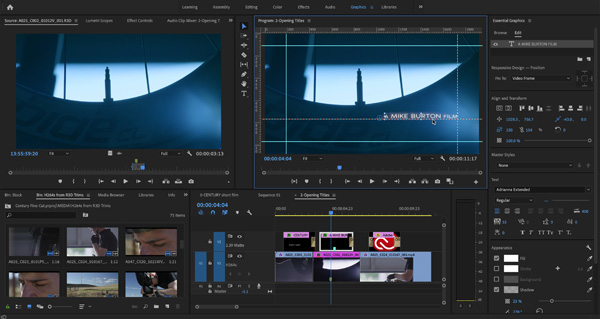
To place a transition on a single cut, Ctrl+drag (Win) or Cmd+drag (macOS) the transition into a Timeline panel. Then, expand the bin containing the transition you want to use. Expand the Video Transitions or Audio Transitions bin. Key Terms: aspect ratio, rule of thirds, foreground, background, color, tone, contrast, cropping, depth of field, field of view, types of shots include: close-up (CU), extreme close-up (ECU), medium close-up (MCU), medium shot (MS), wide shot (WS), long shot (LS), extreme long shot (ELS), background (BG or bg), foreground (FG or fg), over-the-shoulder (OTS), point of view (POV), cutaway, etc. In the Effects panel, find the transition you want to apply. Define common photographic and cinematic composition terms and principles. Key Concepts: sequencing shots, cuts (L and J cuts, cross cutting, match cuts, cutting on the action, cutaway, montage, jump cut), transitions, compositing, audio levels, mixing, background music, narration, sound effects, still images used in video (file formats and image specifications), titles Identify general editorial principles and guidelines for video. Adobe will provide you with a week-long trial of the very latest version Premiere Pro with no strings attached you dont even need to provide credit card details so theres no danger of being stung for an unexpected subscription if you forget to cancel. Key Concepts: following the action leading in and out of shots to give editors time to cut matching shots zooms and pans wide vs.
.jpeg)

Communicate visually using standard film/video timing techniques. 1.5 Demonstrate knowledge of basic editorial principles and best practices employed in the video industry.


 0 kommentar(er)
0 kommentar(er)
